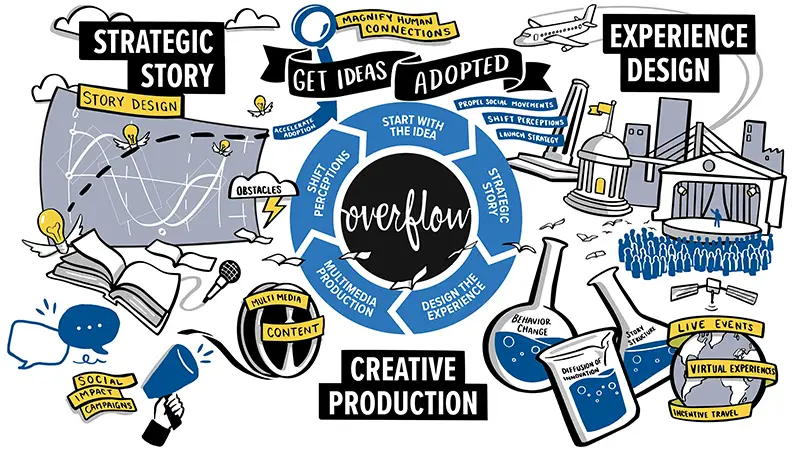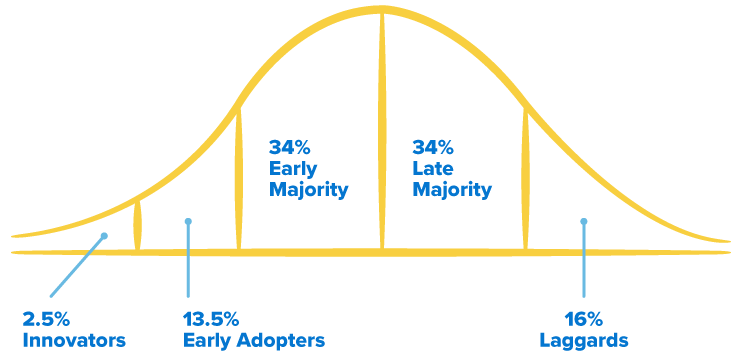How We Do It
Idea adoption is a practice.
While we may be the only company to call ourselves an idea adoption agency, our unique blend of applying theories, behavior change principles and creativity has proven to work. At Overflow, we use strategic story, experience design and creative production to magnify human connection and engage early adopters to spread ideas.
The best ideas don’t always win, and even great ideas fail. The power to influence change begins with a well-told story.

The Power of Story
Stories inspire, form new connections, and create lasting impressions that bring ideas to life. Stories also build trust. Trust is needed for empathy – the essential element allowing vulnerability to create connection. Empathy is required to consider knowledge beyond your own and learn something new.
We understand the shape of story and start by defining who the characters are. Hint: your organization is not the protagonist. The protagonist is generally your targeted audience – the hero who you help achieve their noble goal.
Idea Adoption in Theory
So, what is idea adoption? It’s the practice of sharing intentional stories among members of a group over time so that more advantageous ideas are accepted and desired behavior changes follow.
Related research-based theories inform our practice of idea adoption, including Diffusion of Innovations by Everett M. Rogers, Organizational Knowledge Creation Theory by Ikujiro Nonaka and discipline of Change Management (OCM). Much of our work centers on reaching the first three groups on the adoption curve developed by Rogers – innovators, early adopters and the early majority – who help drive change across a larger population. The ease or difficulty of spreading the idea depends on the innovation’s perceived attributes.

The more your audience says “yes” to these questions, the faster your idea is likely to spread:
- Relative Advantage – is the new idea better?
- Compatibility – does it align with existing values and experiences?
- Complexity – is the innovation easy to understand or use?
- Trialability – can it be experienced before a decision is needed?
- Observability – can others see the results?




